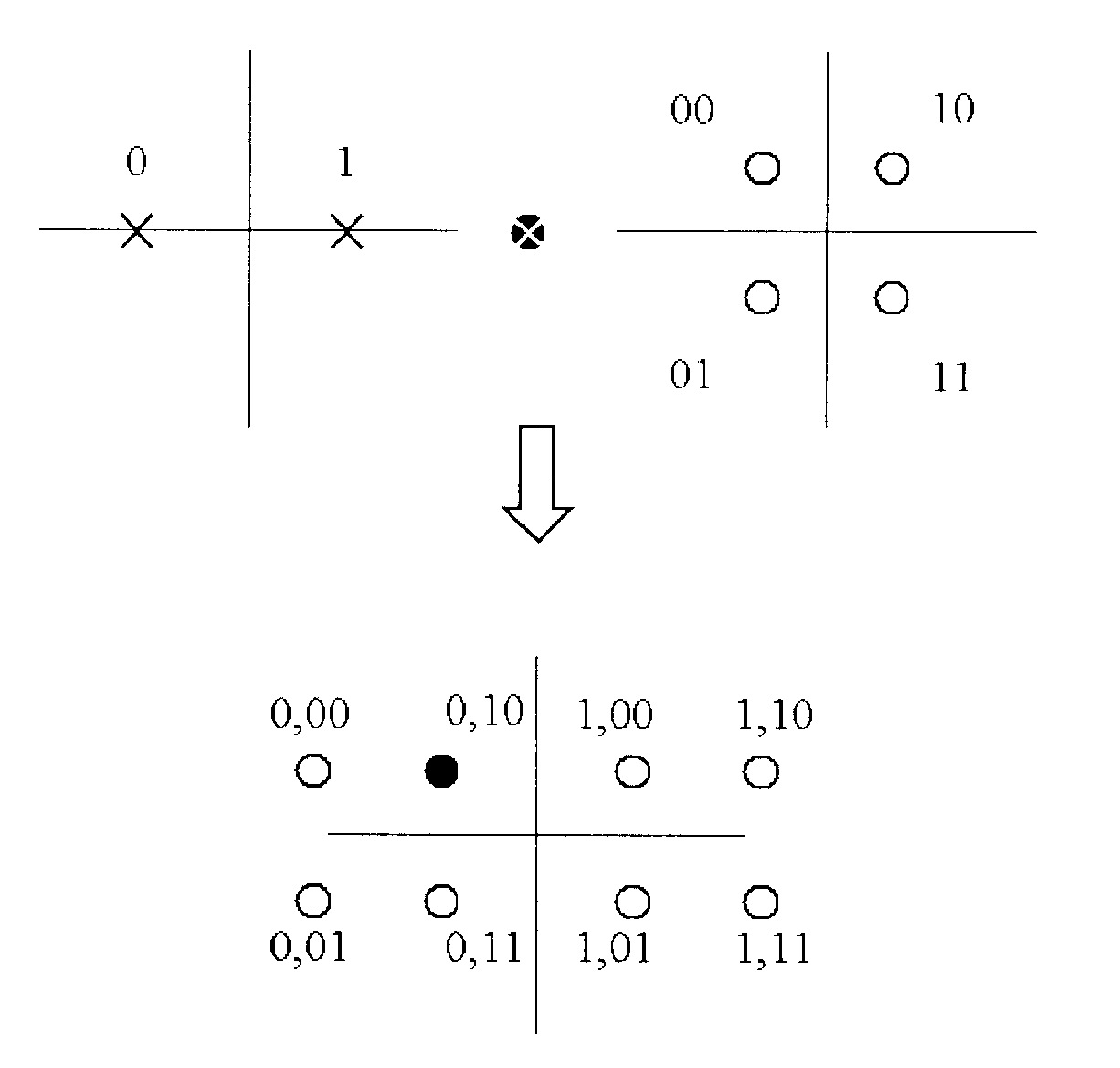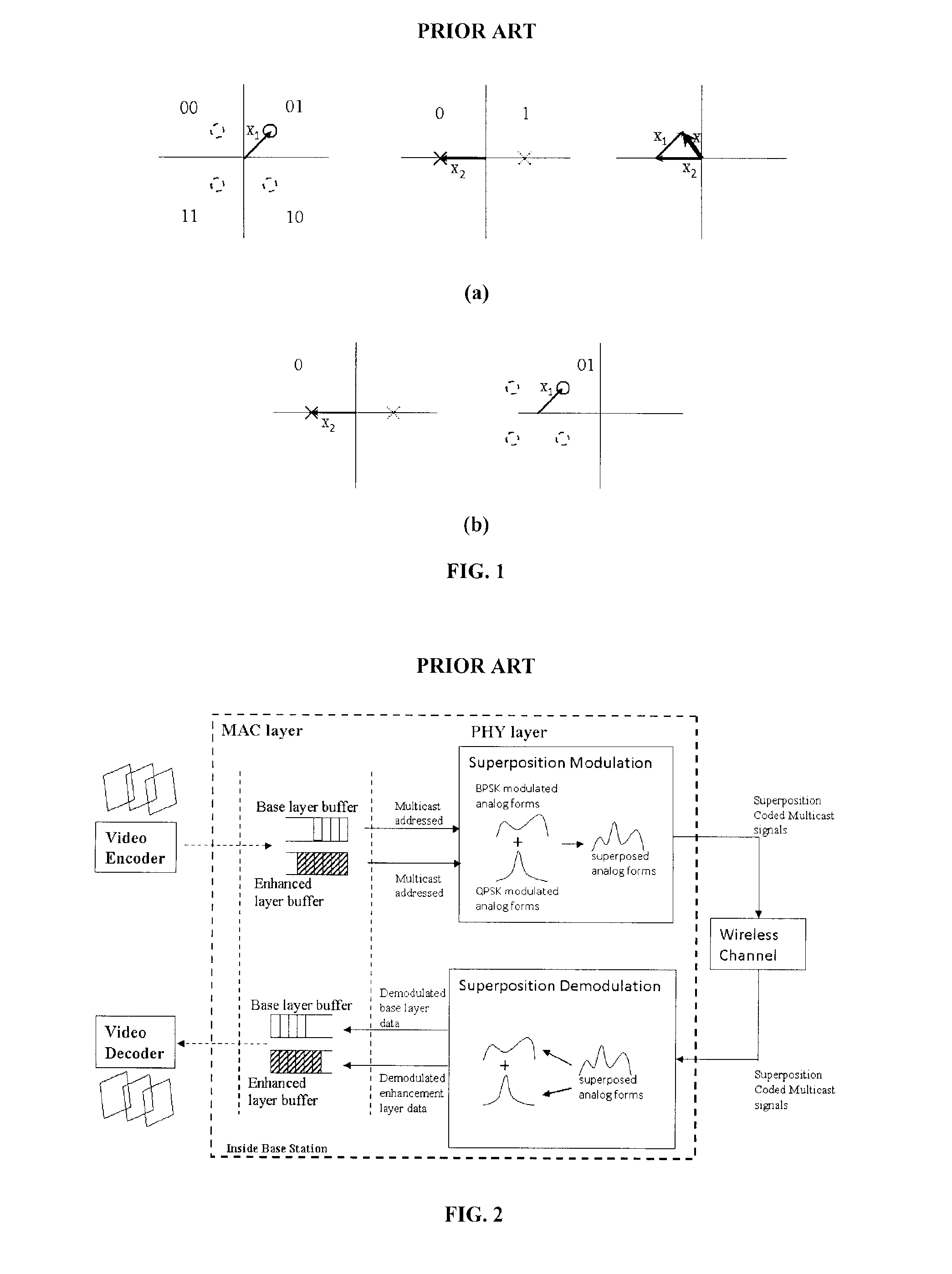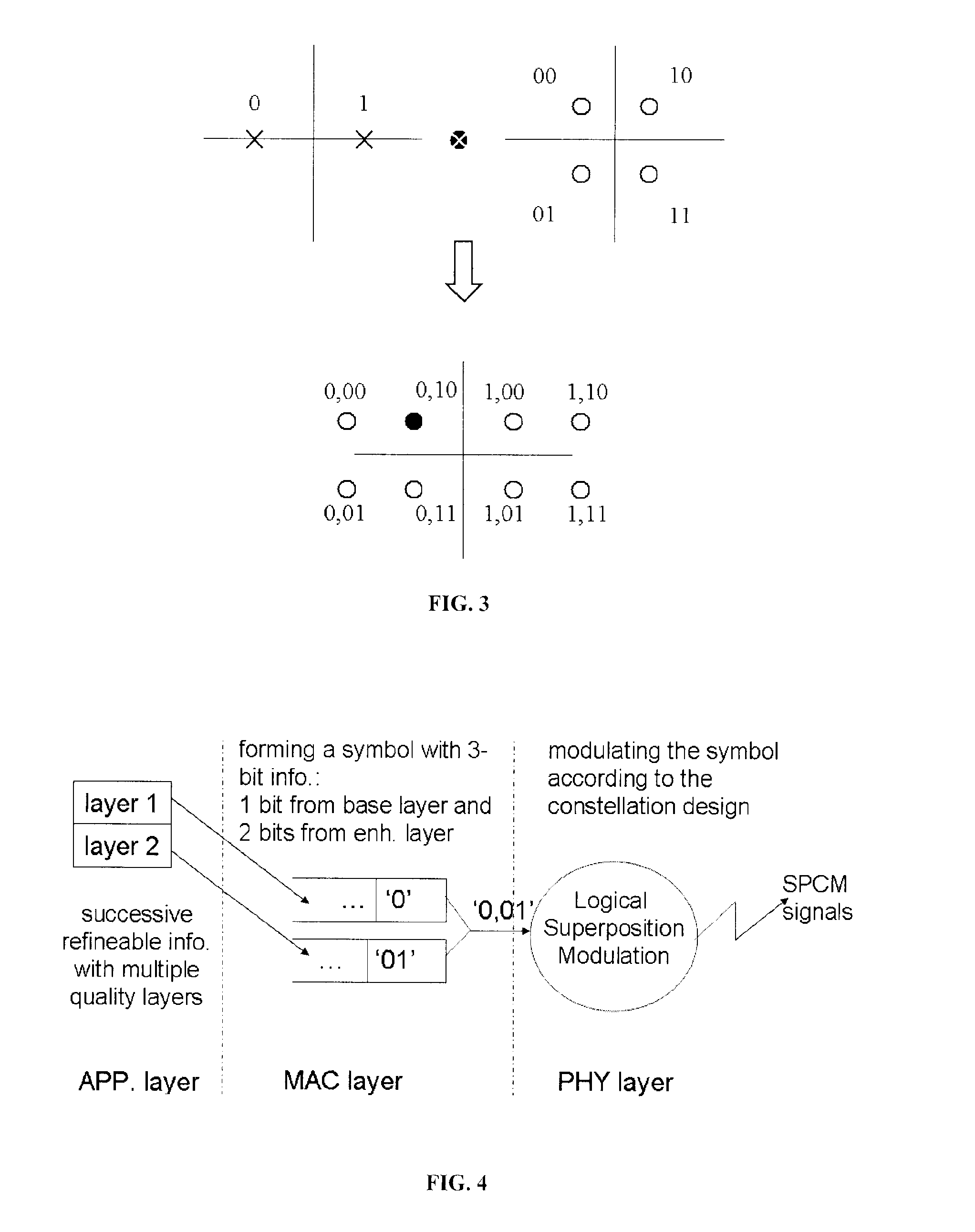System, method, and computer program for superposition coded multicast with a single modulation scheme
a computer program and superposition code technology, applied in the field of wireless communication, can solve the problems of poor economic scale, lack of dedicated hardware and software support, and inability to select a proper transmission rate,
- Summary
- Abstract
- Description
- Claims
- Application Information
AI Technical Summary
Benefits of technology
Problems solved by technology
Method used
Image
Examples
example implementation
[0068]The following discussion is provided for illustrative purposes only and is not intended to narrow the possible implementations provided by the present invention. The logical SPC modulation / demodulation herein described is provided for multicast of scalable video bitstreams over AWGN channels. The logical SPC modulation scheme (denoted as L-SPCM) may be compared with a scheme using mono-modulation (denoted as MONO) as well as the standard SPC modulation scheme for video multicast using SIC (denoted as SPCM-SIC).
[0069]The video bitstream contains 2 quality layers. The L-SPCM and SPCM-SIC schemes map the information bits of base and enhancement layers into a 2-level SPC modulated signal. A group of receivers receive the SPC modulated signals at the same time and perform the corresponding demodulation scheme, where an amount of video information can be obtained according to their instantaneous channel conditions. Without loss of generality, BPSK / QPSK and BPSK / 8-QAM is considered i...
PUM
 Login to View More
Login to View More Abstract
Description
Claims
Application Information
 Login to View More
Login to View More - R&D
- Intellectual Property
- Life Sciences
- Materials
- Tech Scout
- Unparalleled Data Quality
- Higher Quality Content
- 60% Fewer Hallucinations
Browse by: Latest US Patents, China's latest patents, Technical Efficacy Thesaurus, Application Domain, Technology Topic, Popular Technical Reports.
© 2025 PatSnap. All rights reserved.Legal|Privacy policy|Modern Slavery Act Transparency Statement|Sitemap|About US| Contact US: help@patsnap.com



